(A version of this article was shared with Laughing Place and published on February 21, 2025.)
In the central Florida theme park entertainment mecca, the two biggest players in the game are Walt Disney World and Universal Orlando. Sure, there are others like SeaWorld, LEGOLAND, and Busch Gardens. But Disney and Universal are the biggies. They offer the best theme parks, the deepest storylines, and the largest selection of on-site hotels, restaurants, and entertainment. Both have a ton to offer.
But when it comes to personal preference, more often than not we find “Disney” people and “Universal” people. Many Disney devotees refer to Universal as the “dark place down the street” while many Universal fans have a tendency to see Disney as a “kiddie place.”
I’m here to plant my flag firmly in the middle of these two camps and say “Why Not Both?” Aside from some individual preference on story and content, there seems to be a bit of stubbornness on the part of many to view the two resorts as mutually exclusive. And to do that is to shortchange yourself on all you could be enjoying.
My family (which includes our slightly older kids) enjoys BOTH Disney AND Universal. I make no apologies about this. To love one does not need to exclude the other. This is not a marriage. It is theme park vacation entertainment. Love Disney. Love Universal. Best of all – love them both. You deserve it!
Join me on a brief tour of both Walt Disney World and Universal Orlando, as we celebrate ALL that BOTH have to offer. All that being said – there are some key similarities and differences between the two which are worth noting. I will refrain from “scoring” them as best I can, but in some cases, each theme park empire just does certain things a little better.
Disney and Universal Offer Very Different Scenes
When you think of a day in a Disney park, what image comes to mind? For so many, that image includes a family mix of adults and kids enjoying a family-style attraction together, or perhaps sitting at a table embracing a beloved character who has come to say hello.
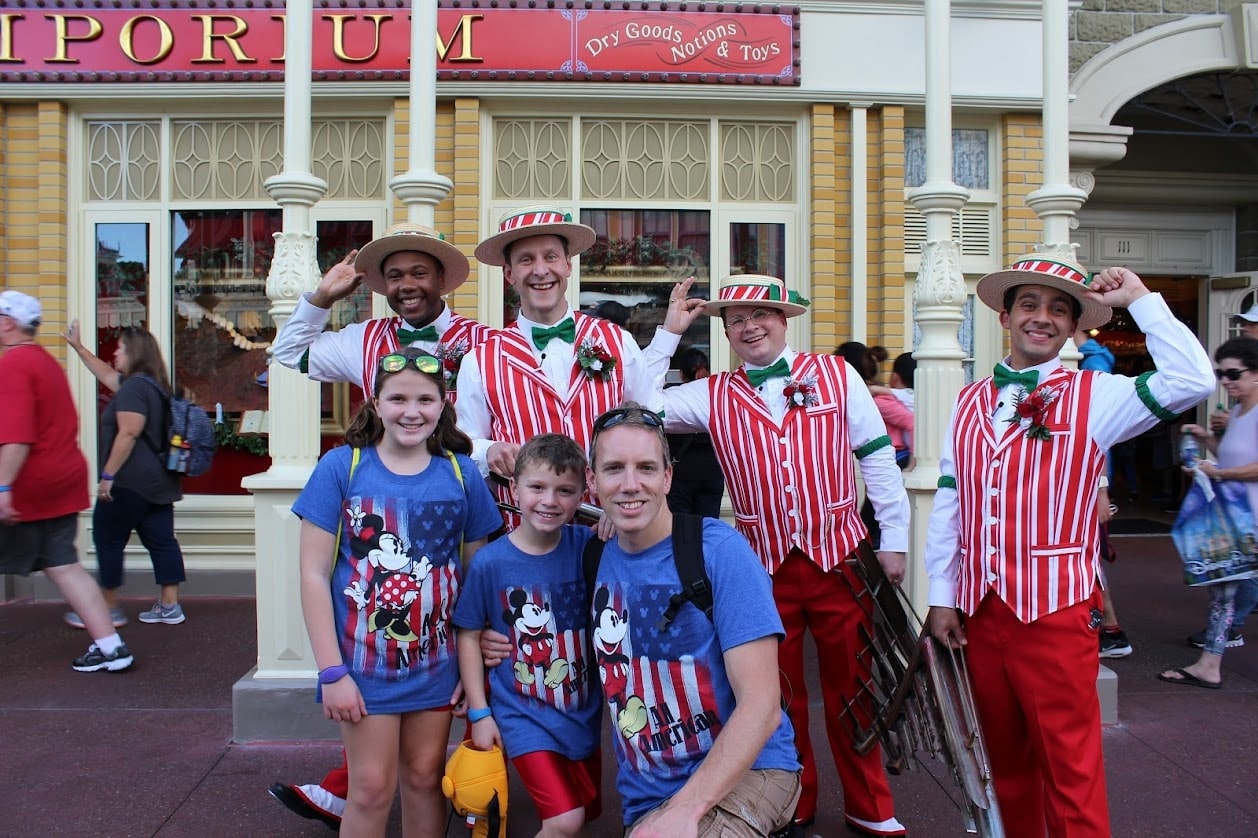
Now let’s flip the script. When you think Universal, what do you see? Instead of that sweet little family, you might envision a pair of guests screaming (gleefully) from the front seat of one of Universal’s many intense roller coasters. Or maybe a cranky dinosaur ready to wreak havoc on its willing guests.
The point here is simple – while Disney and Universal appeal to somewhat the same audience, they each provide very different types of experiences. Disney’s bread and butter resides in the family-friendly experience which can be found somewhere between Fantasyland and Tomorrowland. This sweet spot is exactly what Walt Disney himself envisioned back in the 1950s when he wanted to create “a family park where parents and children could have fun- together.”
Universal, on the other hand, happily sends guests shooting out of the gate at speeds topping sixty miles per hour. Even some of Universal’s more “tame” motion simulator attractions evoke the rush of adrenaline through their intense material. Kids are welcome, but make no mistake, this is not a “kiddie park.”
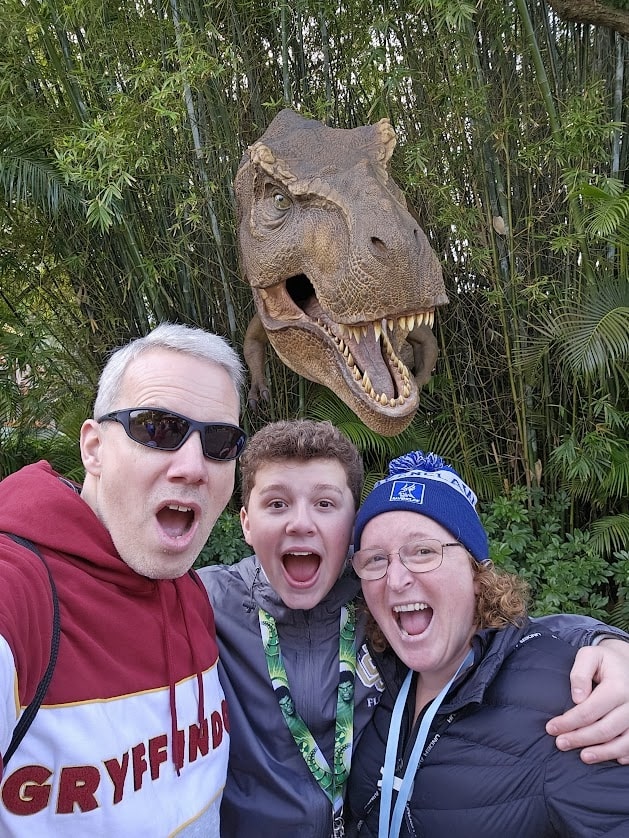
Think of Disney and Universal as a Venn diagram. Disney specializes in mild and family-friendly. Universal excels at mature and intense. Each of these circles has their own loyal clientele. But that center space where they overlap is the audience both theme park empires vie for. This battleground is where we can find properties like Star Wars: Galaxy’s Edge and the Wizarding World of Harry Potter.
So where do you fit into this mix? That’s the beauty of both of these options – you don’t have to choose just one! If you’ve got a family with small kids, Disney will likely be the best fit. Yes, Universal has some options like Dr. Seuss, Minions, and Dreamworks Land for younger families, but that’s a smaller piece of their pie. When your kids start to age up, happily mix in some Universal vacation time. Harry Potter is a nice middle ground, as is Marvel Super Hero Island (which is confusing by the way, considering Disney’s ownership of the Marvel Cinematic Universe, but that’s a story for another day). When the kids are ready, the intensity of Jurassic World and the Hulk coaster will welcome them with open claws…I mean, arms.
For adults, the slate is wide open! I admit, I’m a Disney guy at the bottom of my heart. The stories, the cozyness, and of course, the “Walt.” But I also love all things about the Wizarding World, and I will happily dwell in Hogsmeade and Diagon Alley all day long.
Immersive Theming (Which is Constantly Improving)
Walt Disney is generally credited with creating the first cohesive “theme park” with Disneyland in 1955. Prior to that, our options consisted mainly of fairly dirty “amusement parks.” Walt defined themed entertainment for generations to come. Other theme parks have come, with Universal at the top of the list. But none have really managed to create the cohesive theming to quite the detail to which Disney has been practicing for many decades.
The Magic Kingdom-style collection of fantastical lands is the master plan upon which most Disney Parks have been built. As these parks expand and more content is added, the overall theming of newer properties has grown more sophisticated and immersive (though sometimes the retheming of existing lands creates disconnections in the overarching theme. Disney’s additions of Star Wars: Galaxy’s Edge, Pandora: The World of Avatar, and Cars Land are all legitimate works of art.
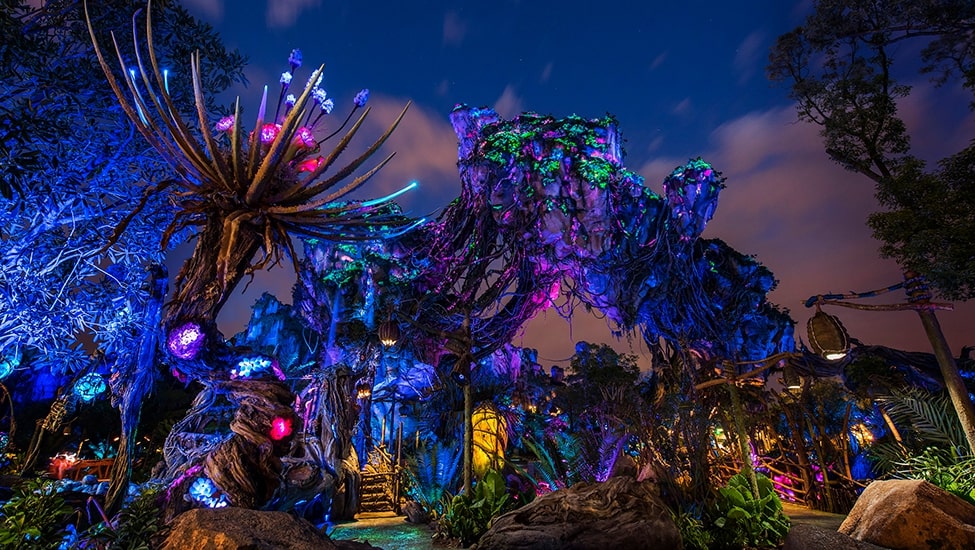
As recently as 2010, Universal lagged way behind Disney in the immersive theming race. Then came a certain boy wizard, and the whole game changed. The Wizarding World of Harry Potter debuted in 2010 with Hogsmeade Village. This delightfully-themed area boasts a medieval-style village, charming shops, a fantastical attraction swooping guests off their feet, and interactive “magic” experiences making guests feel like they are living the life of a wizard. With the addition of Diagon Alley in 2014 and the upcoming Ministry of Magic and other lands opening in May with the new Epic Universe theme park, Universal’s command of themed, immersive entertainment has come a long way.
So what am I saying here? Both Disney and Universal showcase some impressively-themed areas within their theme parks, and both are currently pushing the envelope of theme entertainment to new heights with each passing year. Universal is about to debut their third full-scale theme park in Orlando, and it is being imagined as a master class in themed entertainment putting guests in the middle of the stories. Disney – no stranger to this game – continues to refine, and in many cases completely reimagine, its existing spaces to keep relevant with modern audiences.
Audio Animatronics vs. Digital Screens
Once upon a time, Walt Disney and his brilliant team of Imagineers created near lifelike figures of animals and people using a technology Walt coined “audio animatronics.” These were rudimentary at first – things like cavemen and birds capable of three or four distinct movements. Over time, they became intricately complex and more detailed, to the point where they can legitimately be mistaken for the real thing.
As technology in filmmaking has progressed, digital effects have increasingly replaced practical effects, being both cheaper and more versatile. And as these digital effects have matured, they have been increasingly finding their way into theme park spaces. Disney and Universal have approached this issue very differently in their theme parks.
Disney has chosen to stick with audio animatronics for the majority of their attractions, with selective use of digital effects to enhance the storytelling element. Some might see this as an old-fashioned approach, while others view it as more genuine, not to mention reverent of Walt Disney’s heritage.
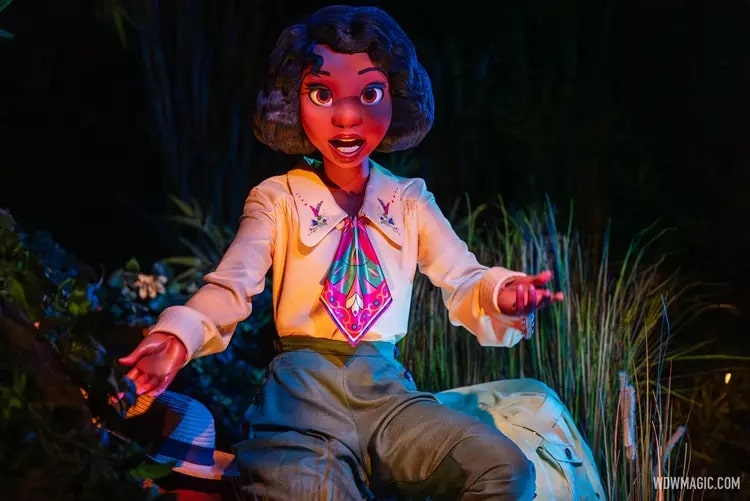
Universal, alternatively, has embraced digital effects almost ubiquitously throughout their theme parks. “Screens” tell the majority of Universal’s theme park stories, with audio animatronics somewhat hard to find. Supplementing the screens with guest vehicle movement, Universal somewhat convincingly simulates movement and atmosphere. But let’s be honest – the constant presence of screen-based characters and settings presents an overall diminished level of believability, and that has hurt Universal’s theme park storytelling ability. While Universal has rebounded a bit in recent years to include some fun Wizarding World and Jurassic World animatronics (and promising looks at upcoming Dark Universe characters), there is still a large divide between the Disney and Universal approaches to character construction. While I try to refrain from scoring, my imagination prefers the tactile presence of animatronics over screens.
Skipping the Lines at Disney and Universal
Nobody likes waiting in line. It is the single biggest factor that takes the magic out of a trip to a theme park. Both Disney and Universal have their own programs designed to help guests wait less in line and have a better experience. But these programs are very different from the ground up. Let’s look at both here.
Walt Disney World Lightning Lane Program
“Back in the day” Disney once used a free system called FastPass, whereby guests could visit an attraction queue, push a button, and walk away with a time to return to the attraction and enjoy it without waiting in a long line. In the 2010s, Disney updated the FastPass program to a digital system, where guests could choose several attractions to wait in line – virtually – while enjoying other aspects of the park. This cut down on wait times for guests who put in the effort to work the system.
After a little back-and-forth in recent years, Disney now offers a program called Lightning Lane. This works very similarly to the old FastPass system, where guests can reserve attractions ahead of their visit, and can enjoy the fruits of their prior planning with several “wait-less” experiences, along with the opportunity to tack on other line-skipping attractions throughout the day, pending availability. The major difference now vs. the FastPass days of old? It’s no longer free. Each park guest using Lightning Lane pays in the neighborhood of $25-$35 per person per day to use the program. Select top-tier attractions fall outside this program and call for separate reservation and payment to skip the line for the one attraction – adding another $20-plus per person, per ride.
What does this add up to? Call it a minimum of $50 per person per day, plus a lot of probing Disney’s mobile phone app during the day looking for the next attraction score. There are definite advantages to being on-the-ball throughout the day, but it comes with the sacrifice of falling out of the moment. We are no longer whimsically wandering through Fantasyland. Instead, we are furiously working our phones looking for the next score, while missing much of the detail Disney’s Imagineers so thoughtfully dreamed up for us when they created this amazing space. This technology-based program definitely comes with a price – not just monetary, but the price of presence, in enjoying the moment.
Universal Express Pass System
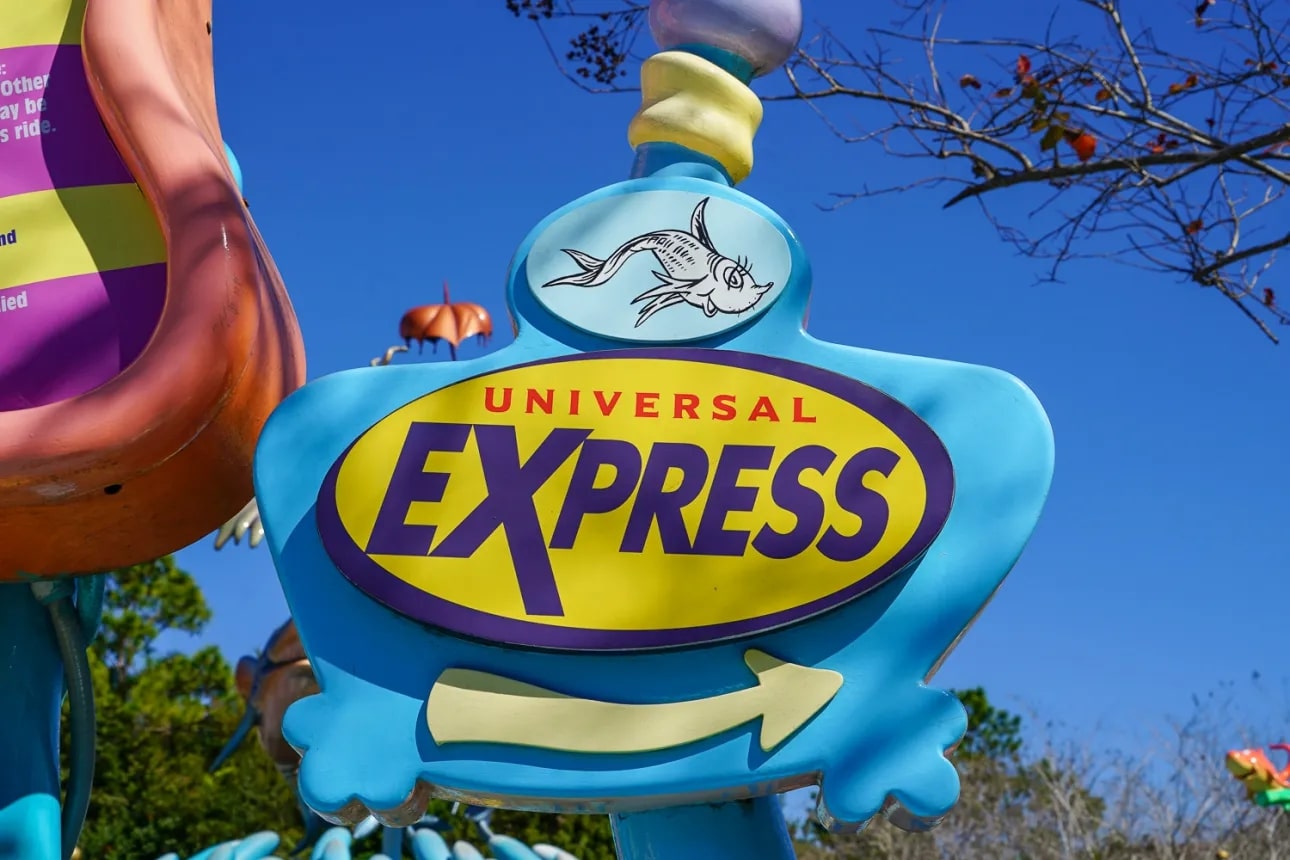
Now, take all the “technological technicalities” out of Disney’s Lightning Lane program and strip it down to its most basic form. At Universal, guests can participate in a much simpler – albeit more expensive – program. Using the Express Pass system, guests at Universal can skip the lines at almost every attraction in their parks. There are no reserving rides ahead of time. No pecking on the phone. Just enjoying the park. Naturally, this comes with a hefty price tag (if it was cheap, then everyone would do it). For a price ranging between the mid $100s and the upper $200s per person, per day, guests can put their phones in their pockets and just enjoy wandering from one attraction to the next. It’s a thing of beauty – if you want to pay.
If the idea of spending $200 per person per day sounds crazy, then Universal offers another option. Guests at their Premier hotels receive Express Pass Unlimited for free, just for staying in their Premier resort. Of course, the room rates for those specific resorts are inflated a bit to account for the perk, but for a family of three or more, the Premier hotel nightly price offsets the price of paying for the Express Pass separately, and guests get to enjoy a wonderful hotel stay as a bonus (we just stayed at Loews Portofino Bay Hotel and made fantastic use of the Express Pass Benefit). The simplicity of Universal’s Express Pass system is a thing of beauty.
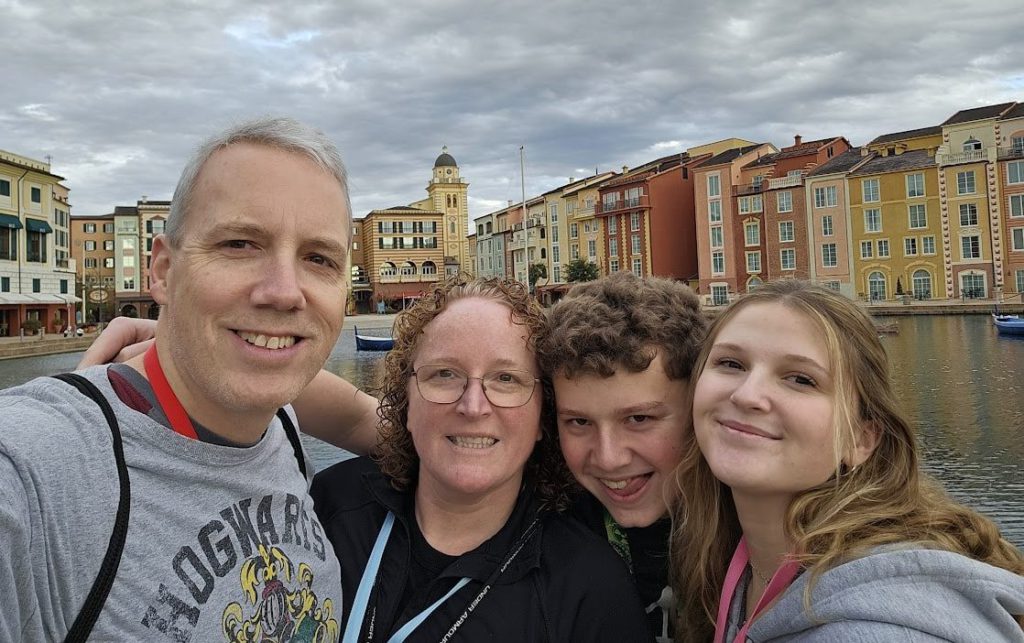
Disney recently responded by offering their own version of an all-inclusive Lightning Lane program. The cost starts in the mid-$100s per person, per day, per park, but goes well over $300 (and can even touch $400) for a day at Magic Kingdom.
Mobile Ordering
Speaking of waiting in line – attractions aren’t the only activities that can command a long wait. Stepping in line to order food from a quick-service counter can eat up a decent chunk of the day as well. Disney and Universal both offer mobile ordering from a large selection of quick service locations.
We’ve used mobile ordering to great effect in the Disney parks, and it works seamlessly. It all starts in the My Disney Experience App, where you can choose from many quick service locations throughout the resort. Those that support mobile ordering will offer the option to order online. The app easily filters options by location (park, resort hotel, and Disney Springs). It’s super simple.
Universal offers mobile ordering as well, though the Universal Orlando app is much more clunky and undependable. One annoying experience we had on a recent trip involved lunch on two different days. In both locations – Captain America Diner in Marvel Superhero Island and Three Broomsticks in Wizarding World Hogsmeade – we actually intended to go to the location and order, take a load off, and sit for lunch. But both locations made us mobile order – either from our table or while waiting in line just to enter the dining venue – and then wait for delivery of our food to our table. In theory, this is ok. But in practice, we found it to be a very impersonal experience, especially in Three Broomsticks, where we were looking for a bit more human interface as part of the immersion. We found difficulty in trusting that the server would adequately follow up with us on our meal needs. That being said – mobile order is here to stay, and it definitely has a valued place in theme park touring.
Perks for Staying at Disney and Universal Hotels
For many guests, staying in the “Disney bubble” is a huge part of the experience. Once you pass under the archway on World Drive, you shed the worries of life and just soak up the magic for the rest of your trip. While it gets much less attention, Universal offers its own very similar and satisfying “bubble.” It’s just not quite as big as Disney’s. But aside from the intangible cozy feeling of staying in the magic, let’s explore the measurable advantages of staying on property.
Extended Park Hours
Both Disney and Universal offer onsite guests the perk of enjoying additional park hours. Disney offers on-site guests a 30-minute head start at each of their four theme parks. As of the date of this article, in Magic Kingdom this equates to Main Street and attractions in Fantasyland and Tomorrowland. In EPCOT, it includes select attractions in the “area formerly known as Future World,” along with Frozen Ever After and Remi’s Ratatouille Adventure. In Disney’s Hollywood Studios, early attractions include those in Star Wars: Galaxy’s Edge and Toy Story Land, as well as Mickey and Minnie’s Runaway Railway and Rock ‘n Roller Coaster. In Disney’s Animal Kingdom, early attractions include those in Pandora: World of Avatar as well as Expedition Everest and – while they still exist – DINOSAUR and It’s Tough to be a Bug. Select Disney theme parks are also open late to Deluxe Resort guests on select days (usually once per week, with a schedule published on Disney’s website).
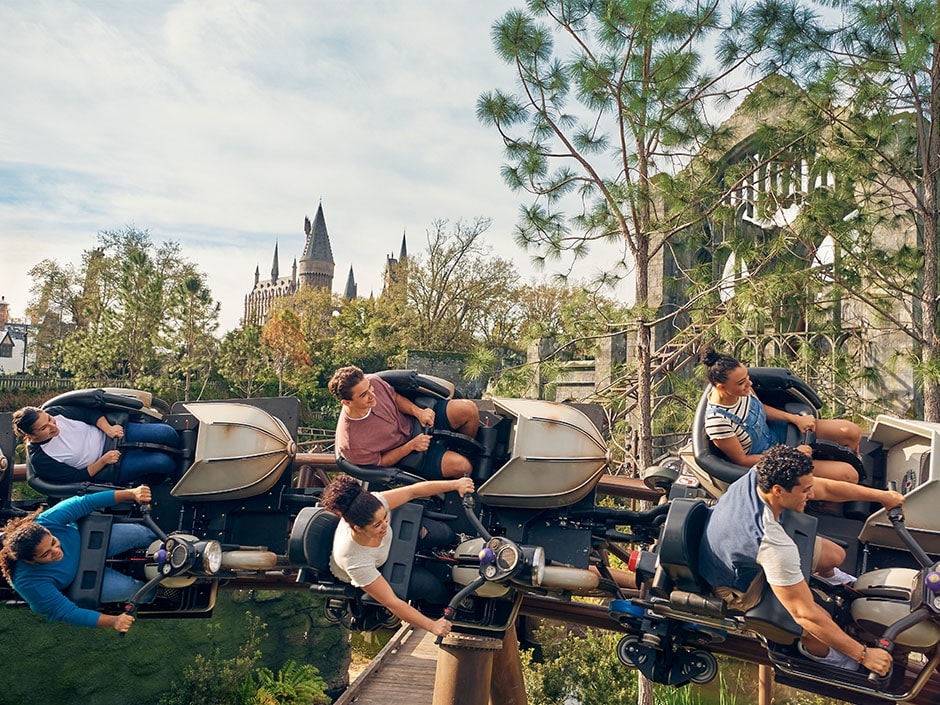
At Universal, early park access includes a portion of Islands of Adventure park, where the early morning attraction roster features all of the Wizarding World – Hogsmeade attractions and the Jurassic World VelociCoaster. Universal is not currently offering early admission to any portion of Universal Studios park. With Hagrid’s Magical Creatures Motorbike Adventure roller coaster currently not in Universal’s Express Pass system, the early park admission presents a golden opportunity for early rising guests to ride this sensational coaster without waiting two hours in line.
Free Water Park Admission on Check-In Day (Disney Only)
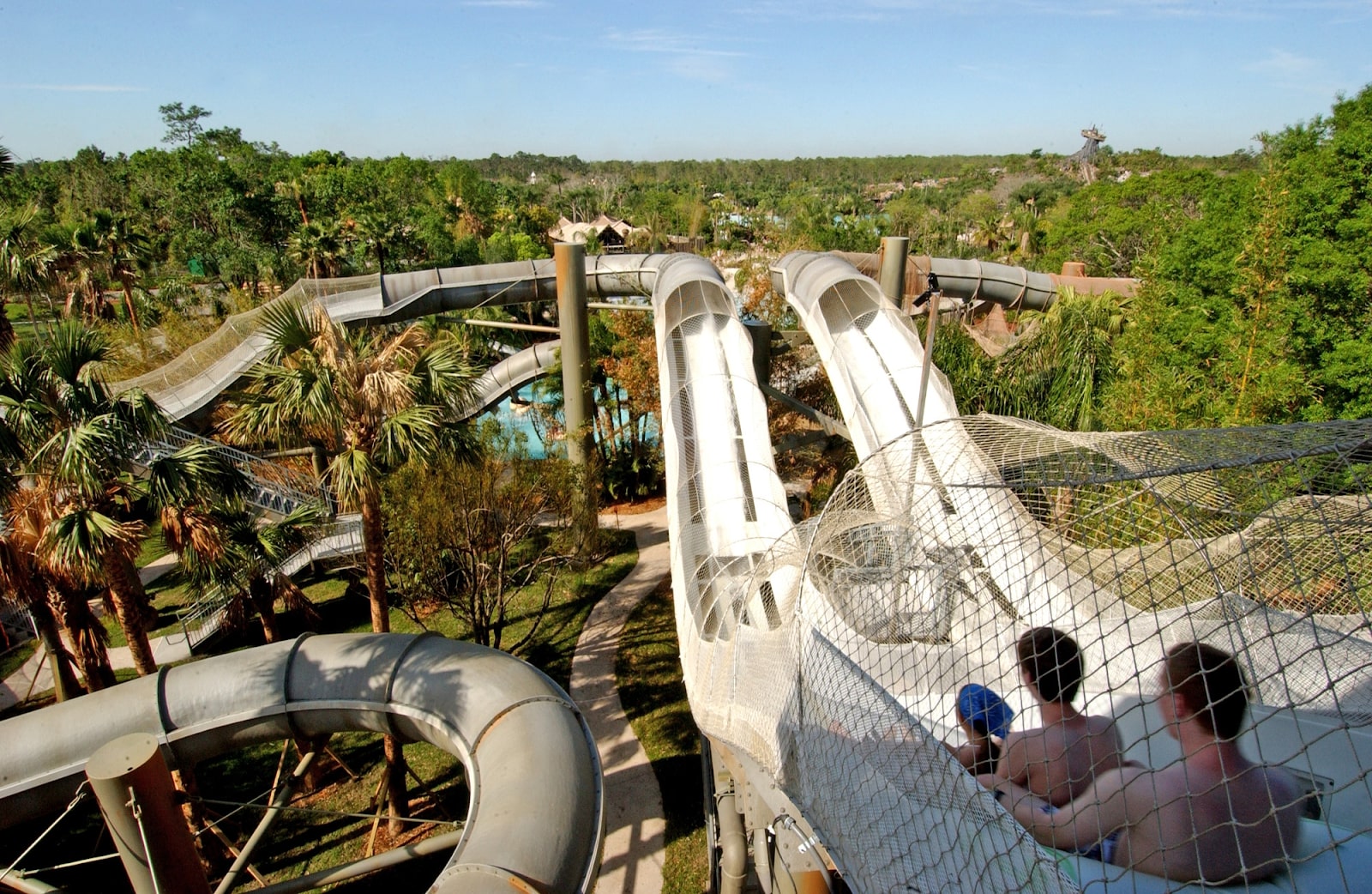
Throughout 2025, Disney is offering on-site guests free use of one of their water parks on the day of their check-in. Depending on the time of arrival, this could be a fun perk for guests at the beginning of their trip. Universal does not currently offer this benefit.
Early Lightning Lane Reservation Window (Disney Only)
With most guests at Walt Disney World using the Lightning Lane system, Disney offers on-site guests the advantage of being able to purchase and reserve their Lightning Lane selections seven days before their first park day, and then reserve attractions for other park days for the duration of their trip. Off-site guests have to wait until three days before each of their park days to make these reservations. Universal’s Express Pass is not a reservation system, so this type of perk is not applicable to Universal hotel stays.
Resort Transportation
Both Disney and Universal offer complimentary transportation around the resort for on-site guests.
The most basic and ubiquitous of these options is bus transportation. Every on-site hotel at each resort offers bus service to each of that resort’s theme parks, water parks, and dining/shopping district (Disney Springs for Disney and CityWalk for Universal).
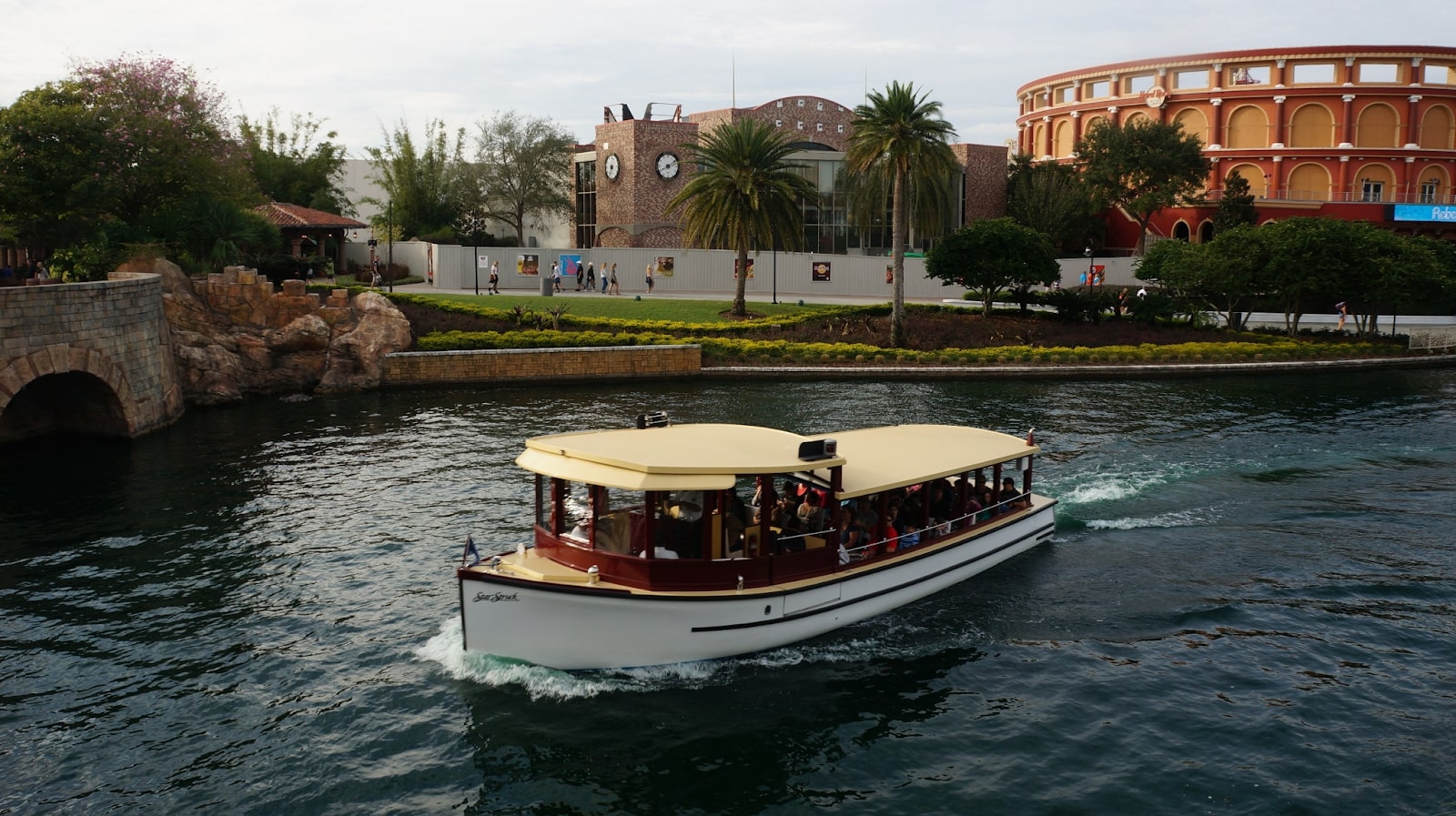
By water, each resort offers water taxi service between select resorts and select parks. For Disney, this includes Magic Kingdom and Disney Springs, each of which are accessible by boat from several nearby waterfront Disney resorts. At Universal, water service is more “universally” useful, with both Universal Studios and Islands of Adventure parks, as well as Universal CityWalk, all accessible by boat to several nearby Premier resort hotels. One humorous note about boat service: Disney and Universal approach the boat vibe very differently. At Disney, guests hear relaxing, gentle music with the recording of a friendly voice welcoming them “home.” It’s all very warm and fuzzy. At Universal, the taxis whip in and out of the docking slots, making great haste taking guests back and forth, all the while playing a fun selection of energizing tunes. The water taxi experience alone might be the single best demonstration of the different vibes between Disney and Universal, and both are great!
Also on the water, Disney’s Magic Kingdom uses the large ferry boats to move guests between the Transportation and Ticket Center (TTC) and the park’s front gate.
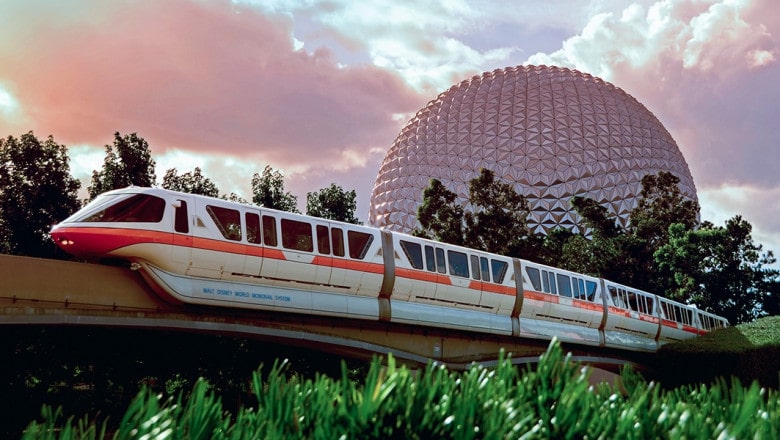
In addition to buses and boats, Disney also offers two more unique methods of on-site transportation. The iconic Monorail connects Magic Kingdom and EPCOT to each other, as well as select resorts in the Magic Kingdom area. In the air, the Disney Skyliner floats guests via gondola buckets between EPCOT, Disney’s Hollywood Studios, and several nearby resorts. Both the Monorail and Skyliner have limited reach, but offer unique experiences serving as attractions unto themselves.
Park Hopping at Walt Disney World and Universal Orlando
Flexibility is key when enjoying a theme park vacation. Both Disney and Universal offer the option of park hopping (while the term “park hopping” is formally used by Disney and “park-to-park” is used by Universal, I’ll apply the term “park hopping” to both here). At both resorts, the park hopping option is an additional cost per ticket.
With four theme parks to choose from, the idea of park hopping at Disney is very appealing. But in practice, most Walt Disney World parks are so far away from each other that traveling from one park to another can take too much time out of the day for the option to be really enjoyable and valuable. That being said, park hopping works well when travelling between EPCOT and Disney’s Hollywood Studios, as both parks are located very close to each other. For the family traveling to Disney once every couple years (or less frequently) I wouldn’t recommend park hopping. Just dedicate the day to a single park and do it up – don’t waste time traveling between parks. But for more frequent visitors who aren’t as concerned with jamming every moment with as many attractions as possible, the park hopper option is a good one. It also works nicely with EPCOT, where guests can spend a portion of their day at another theme park, then visit EPCOT later for some festival magic and excellent food options.
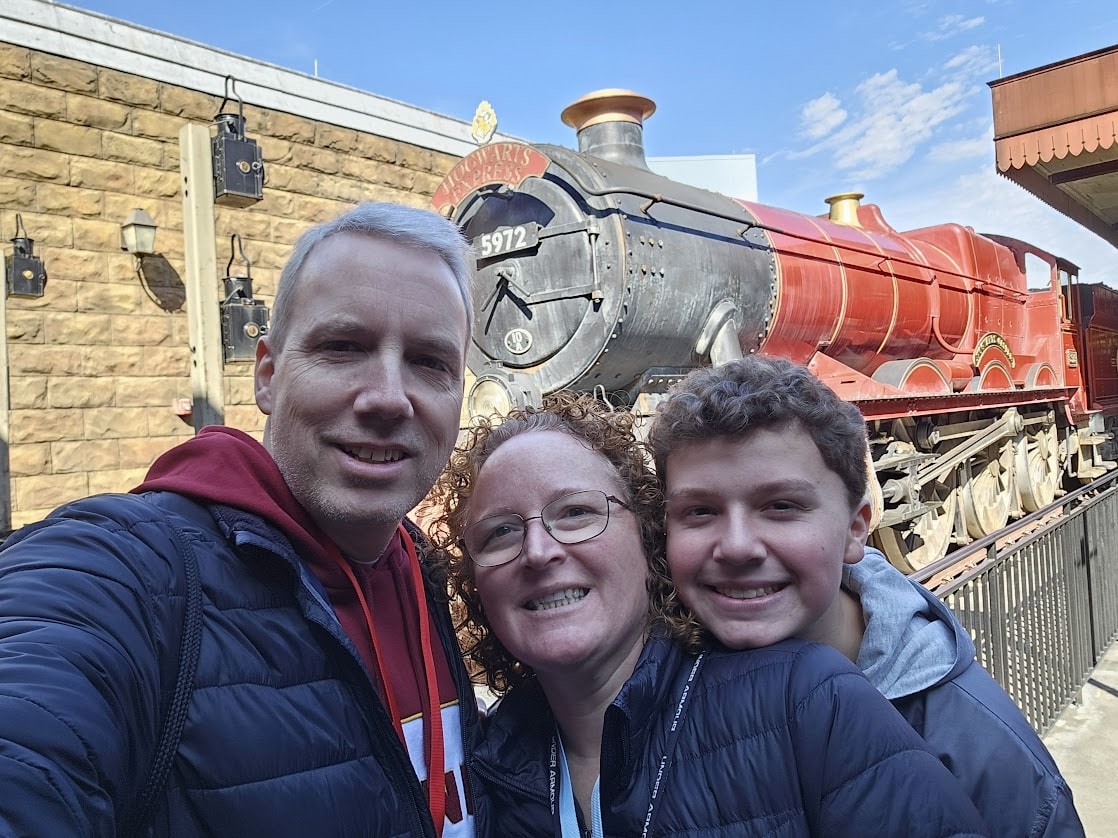
At Universal, park hopping can involve both primary theme parks, and can also include Universal’s Volcano Bay “water theme park.” For purposes of this discussion, let’s just consider Universal Studios and Islands of Adventure parks. Hopping between these parks is essential for several reasons.
- 1 ) The parks are located right next to each other, so park hopping is extremely easy and quick. The walk from one park gate to another is less than five minutes, representing minimal down time.
- 2) The Hogwarts Express train is both an attraction and a legit method of conveyance, traveling between Hogsmeade (located in Islands of Adventure) and Diagon Alley (located in Universal Studios). Since this is a legit method of conveyance between the parks, guests need a park-to-park ticket to be able to ride the attraction. This is a brilliant move on Universal’s part. The ride is charming, and it really completes the full Wizarding World experience. Plus, it really saves some steps to just hop the train instead of walking from the Wizarding World to the exit of the park, then through the entrance of the other.
- 3) Depending on your thirst for adventure, park hopping at Universal can give easy access to all rollercoasters in both parks, easily achieved in one seamless day. For adrenaline junkies, one day in both parks using a park-to-park ticket combined with Express Pass can be more than enough time to hit all the major thrill rides.
All told – I highly recommend park hopping at Universal. I find it essentially necessary to have the option. It’s just too easy and convenient.
Disney and Universal Entertainment Districts in Orlando
Outside the theme parks, Disney and Universal both offer dining and shopping centers – places to have a bite, grab some merch, or even catch a movie or live show. Disney Springs boasts an extensive selection of restaurants – both full service dining and quick service locations. Sprinkled in among the dining locations are many retail locations, including clothing, toys, jewelry, and novelty items – all with a decidedly Disney spin. Aside from eating and shopping, Disney offers adult-only spaces in the evening, a full bowling alley and movie theater, dedicated Cirque Du Soleil venue, and outdoor entertainment spaces. The only downside to Disney Springs is its location. It is located nearby to a few Disney resort hotels, but for the rest, it’s either a drive or bus ride away.
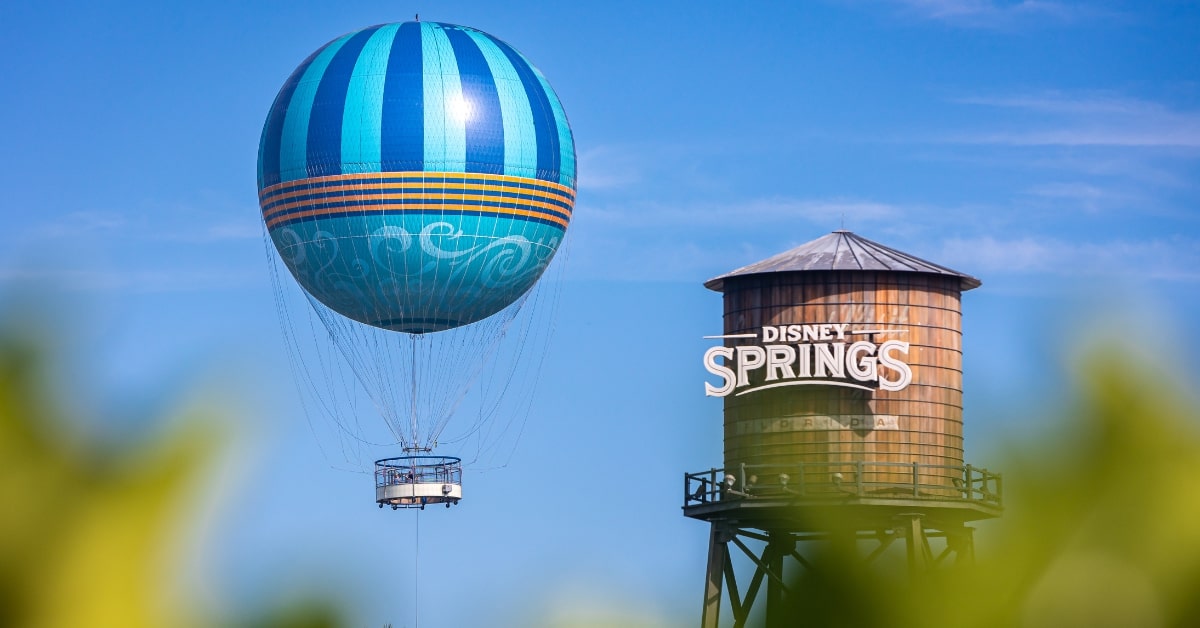
Universal’s CityWalk is built on much the same foundation as Disney Springs, with a nice mix of food, shopping, and entertainment. While it is not as large as Disney Springs, CityWalk shines by virtue of its location. As with most locations in Universal Orlando, CityWalk is located just steps from both Universal Studios and Islands of Adventure parks, and is a short walk or boat ride from all Preferred and Premier-level hotels. The convenient location is a huge draw for us, as we are more inclined to stroll through CityWalk after a day in the parks than we are to dedicate a full trip outing like we would with Disney Springs. And Universal’s resort planners shrewdly placed CityWalk in between the two parks and the paid parking garage area, so thousands of guests each day have to walk directly through CityWalk to get to their cars. Well played, Universal.
Seasonal Events
Disney and Universal veer pretty hard from each other in our last category. Let’s start with the holidays, then circle the rest of the calendar.
Halloween
This may be the single most obvious “demon”-stration of how Disney and Universal are different in their appeal to their target audience. Disney runs the always popular Mickey’s Not-So-Scary Halloween Party at Magic Kingdom on select dates starting in August and extending through Halloween. This is good, clean fun with guests dressing in costumes, trick-or-treating, meeting some “not so scary” Disney villain characters, and enjoying shows, a parade, and fireworks.
fireworks.
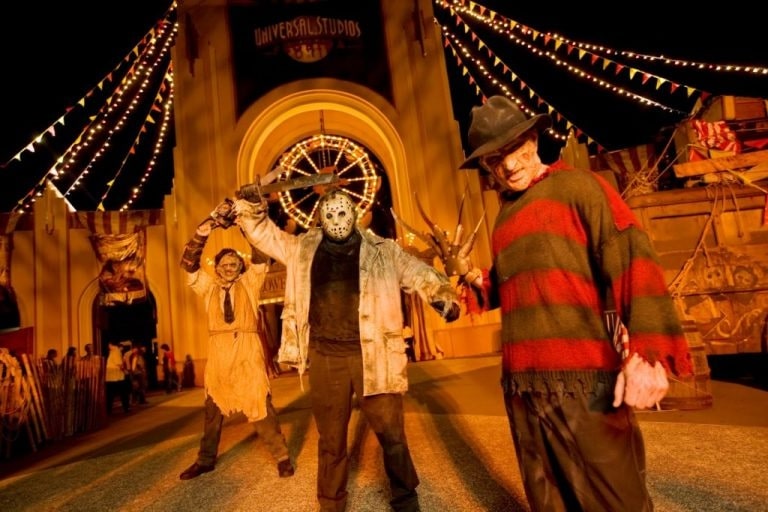
Universal goes in the complete opposite direction with Halloween Horror Nights – an evening event featuring actual scary moments, haunted houses, “scare zones,” and entertainment. Where Disney caters to even the youngest guests at Halloween, Universal recommends ages 13 and up for Halloween Horror Nights, and does not allow guests to wear costumes.
Christmas
My personal favorite after-hours party is Mickey’s Very Merry Christmas Party at Magic Kingdom. Plenty of cookies, cocoa, meetings and greetings, and good cheer abound at this festive event, as well as an iconic parade featuring a battalion of toy soldiers. The decorations are outstanding (and you don’t need to attend the party to enjoy them)! Over at Disney’s Hollywood Studios, guests can enjoy Disney Jollywood Nights – a yuletide celebration with a distinctly Tinseltown feel. While all ages are invited to attend this hard-ticket event, it caters more to an older crowd, specializing in jazz music and classic entertainment.
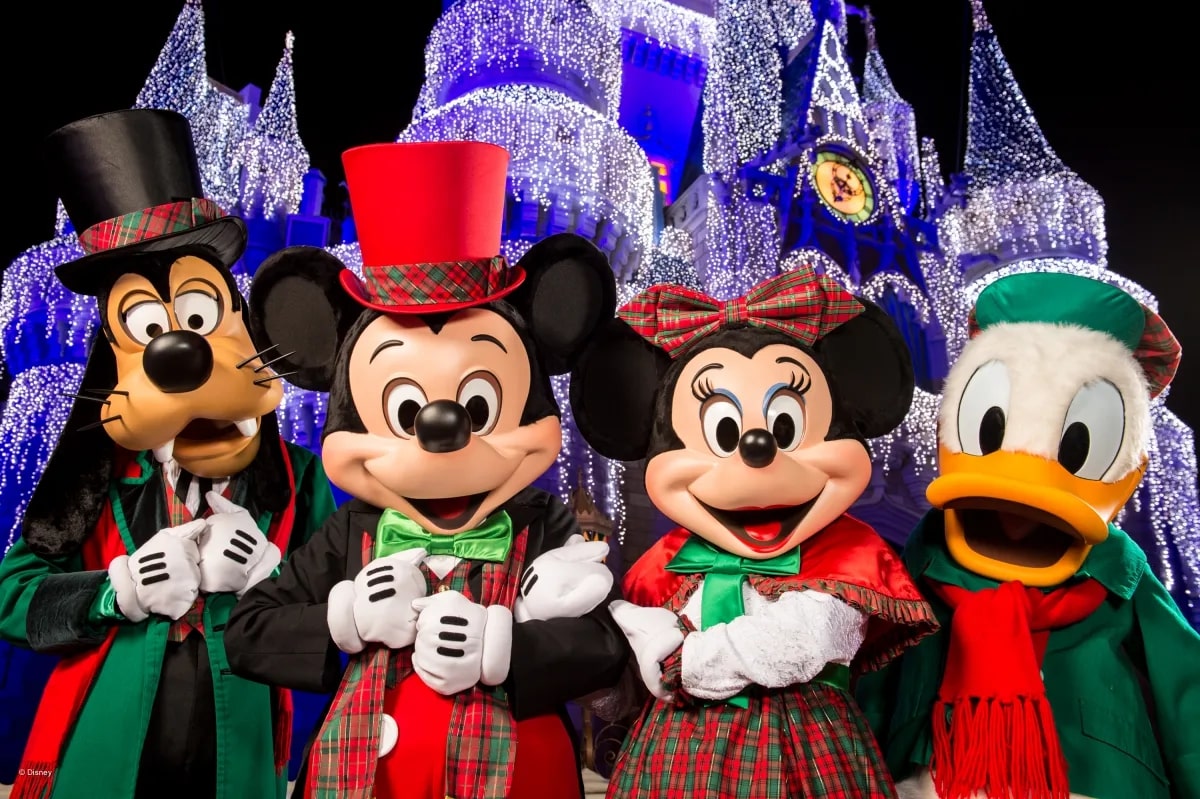
Universal doesn’t offer a specific Christmastime party, but they do have a fun parade inspired by the iconic Macy’s Thanksgiving Day Parade. They also transform Seuss Landing into Who-ville for “Grinchmas.” Meeting the Grinch himself is probably the single most popular activity at Universal during Christmastime. Over in Hogsmeade, Universal displays a charming Christmas display on the facade of Hogwarts Castle.
EPCOT Festivals
It’s not a question of when there is a festival happening at EPCOT, but when there is not a festival happening at EPCOT. Most of the year, guests can catch a piece of festival magic here, including the International Food & Wine Festival in late Summer/Fall, International Festival of the Holidays during the holidays (mostly December), International Festival of the Arts in Winter, and International Flower & Garden Festival in Spring. These festivals offer unique guest activities, specialty food and drinks, concerts, and attractions.
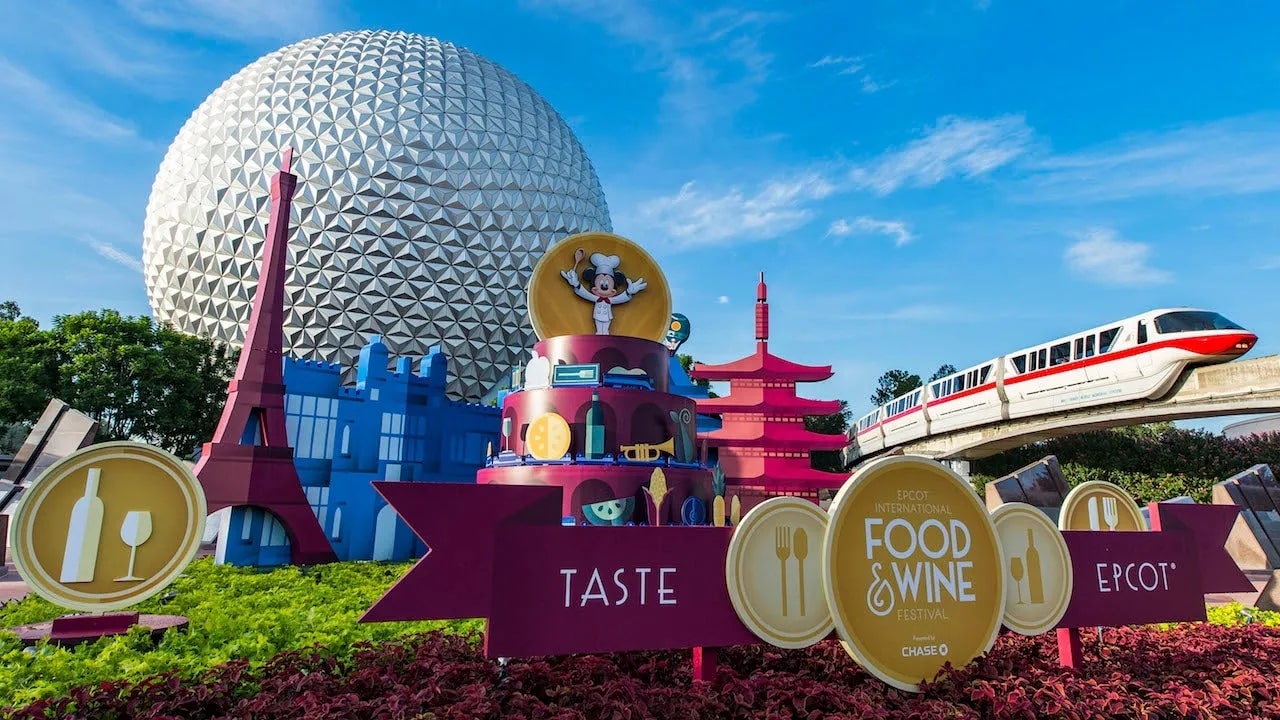
Mardi Gras
Universal may not have year-round festivals, but they do put on a month-long party for Mardi Gras. At Universal’s Mardi Gras: International Flavors of Carnaval, guests can enjoy tasty eats from China, Canada, Colombia, New Orleans and more, sound off at live concerts on select nights, and catch some beads during the Mardi Gras parade. This hopping event runs on select dates in February and March.
—
There you have it – a not-so-short but hopefully informative celebration of both Walt Disney World and Universal Orlando. If you are interested in traveling to either of these Orlando destinations, please reach out to Facts and Figment Vacation Planning. My travel planning services are absolutely FREE to you, and I can help you score the best, hardest-to-get deals to make your vacation more affordable and more enjoyable!
Wherever you look to spend your theme park time in Orlando, you won’t go wrong at either location. Are you loyal to only one resort, or do you enjoy both? Share your thoughts with Facts and Figment on social: Instagram Facebook X




